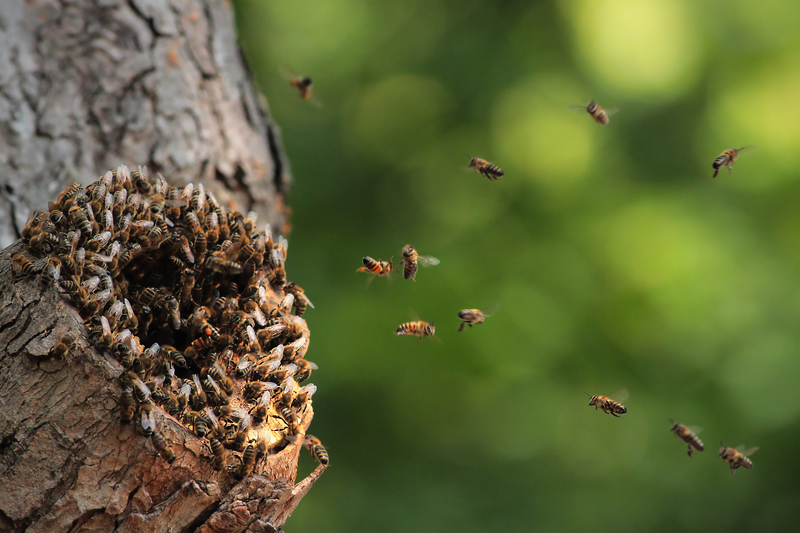Unlock the Secrets to Budget-Friendly Gardening Ease
Posted on 29/06/2025
Unlock the Secrets to Budget-Friendly Gardening Ease
Are you passionate about lush gardens but concerned about the costs? Unlock the secrets to budget-friendly gardening ease with this comprehensive guide. You'll find expert advice, creative tips, and sustainable strategies designed to make gardening accessible to everyone, regardless of budget. Whether you're a beginner or a seasoned gardener, these practical solutions will help you nurture a gorgeous outdoor space--without emptying your wallet.
Why Choose Budget-Friendly Gardening?
Gardening offers numerous benefits--from fresh air and exercise to stunning landscapes and home-grown produce. However, expenses can quickly add up. Embracing cost-effective gardening techniques not only saves money, but also encourages resourcefulness, creativity, and environmental stewardship. With smart planning and a bit of ingenuity, anyone can cultivate a thriving garden oasis on a shoestring budget.
- Eco-Friendly: Reusing and recycling materials minimizes waste and supports sustainability.
- Personal Satisfaction: Growing a productive, healthy garden without splurging creates a sense of achievement.
- Learning Opportunities: Budget gardening encourages problem-solving and continuous learning.
- Customization: DIY solutions and thrifty ideas let you personalize your green space.

Planning Your Cost-Effective Garden
Assess Your Space
Before you start planting, analyze your available area. Balconies, patios, or even sunny windowsills can become vibrant gardens. If your aim is affordable gardening ease, begin small and expand as your confidence grows.
- Sketch Your Layout: Map out potential planting beds, containers, or vertical setups.
- Observe Sunlight Patterns: Monitor how much sunlight different parts of your space receive.
- Test Your Soil: Simple DIY soil tests or affordable kits can help determine nutrient quality and structure.
- Set a Realistic Budget: Decide what you can comfortably spend each season.
Set Clear Goals
Decide what you hope to achieve--flowers, herbs, vegetables, or a combination. Setting priorities ensures cost-effective purchases and avoids impulse buys. For truly budget-friendly gardening ease, focus on plants that thrive in your climate with minimal intervention.
Money-Saving Gardening Strategies
Start Plants from Seeds
Growing plants from seeds is vastly cheaper than buying mature plants or seedlings. Seed packets are affordable, come with instructions, and often yield more than you need--perfect for sharing with friends or neighbors.
- Look for Heirloom or Open-Pollinated Seeds: These types let you save seeds for next year's garden.
- Participate in Seed Swaps: Local gardening groups often exchange seeds at minimal or no cost.
- Reuse Household Containers: Yogurt cups, egg cartons, and other discarded items make great seed starters.
Opt for Perennials Over Annuals
Perennials return each season, reducing yearly expenditures. Mix perennial flowers, herbs, and edible plants for lasting budget ease in the garden.
- Daylilies, Hostas, and Coneflowers: These flowering perennials provide color and require minimal maintenance.
- Chives, Mint, and Thyme: Perennial herbs provide ongoing flavor and fragrance.
- Fruit Bushes: Blackberries, raspberries, and blueberries offer abundant yields for years.
Propagate Plants for Free
Propagation is a powerful tool. By dividing mature plants, taking cuttings, or encouraging self-seeding, you can multiply your favorites at no additional cost.
- Rooting Cuttings: Many herbs, succulents, and houseplants root easily in water or moist soil.
- Splitting Bulbs or Clumps: Daylilies, iris, and certain grasses are easily divided and replanted.
- Collecting Volunteer Seedlings: Many plants spread on their own; simply transplant the extras.
DIY Composting for Rich Soil
Instead of purchasing expensive fertilizers, create your own compost. Homemade compost improves soil fertility and structure, fostering robust plant growth.
- Use Kitchen Scraps: Fruit and vegetable peels, coffee grounds, and eggshells are compost gold.
- Incorporate Yard Waste: Leaves and grass clippings enrich your compost pile.
- Avoid: Meat, dairy, and oily foods, which can attract pests.
Composting is a hallmark of sustainable and budget-friendly gardening ease.
Make Your Own Natural Fertilizers and Pest Control
Save money while keeping your garden healthy. Homemade organic solutions minimize the need for store-bought chemicals and are safer for pets and wildlife.
- Eggshell Tea: Soak crushed eggshells in water for a calcium-rich plant boost.
- Banana Peel Tea: Provides potassium for stronger stems and blooms.
- Neem Oil Spray: Mix with water for a gentle, natural insect repellent.
- Soap Sprays: Diluted mild soap solutions tackle aphids and mites.
Thrifty Gardening Design Tips
Repurpose and Upcycle Materials
Sourcing free or inexpensive garden materials is both eco-conscious and wallet-friendly.
- Pallet Gardens: Old pallets can become raised beds, planters, or vertical gardens.
- Container Gardening: Buckets, crates, and even old boots can serve as quirky, cost-free pots.
- Reused Bricks or Stones: Salvaged from construction sites or neighbors, these materials build attractive pathways or edging.
- DIY Trellises and Supports: Bamboo stakes, branches, or wire can support climbing plants at little to no cost.
Mulch for Less
Mulching conserves moisture, suppresses weeds, and enriches soil. Don't spend on expensive bagged mulch--opt for cost-free options:
- Grass Clippings: Use dry clippings to mulch borders and veggie beds.
- Shredded Leaves: Collect autumn leaves to mulch flower beds for free.
- Newspaper or Cardboard Layers: These break down quickly, smother weeds, and improve soil.
Use Water Wisely
Reducing water waste is central to affordable gardening ease. Try these techniques:
- Rainwater Harvesting: Set up barrels or bins to collect rainwater for your plants.
- Drip Irrigation Systems: DIY systems from tubing and recycled bottles deliver moisture directly to roots.
- Water Early or Late: Watering during cooler parts of the day reduces evaporation.
- Drought-Tolerant Plants: Choose varieties needing less water for ongoing savings.
Finding Free or Low-Cost Gardening Resources
Community and Online Exchanges
Your community is a treasure trove of free and affordable gardening resources.
- Plant Swaps: Local gardeners and clubs often organize exchanges of seeds, plants, and tools.
- Online Marketplaces: Platforms like Freecycle, Craigslist, or Facebook Marketplace often have free or cheap garden items.
- Public Libraries and Gardens: Some offer seed libraries, gardening tool rentals, or educational workshops.
Ask for Offcuts and Castoffs
Nurseries, landscaping companies, and neighbors frequently have leftover plants, cuts, or materials they're happy to give away. Timely asking can provide soil, mulch, or plant divisions at zero cost!
Expert Tips for Effortless and Economical Gardening
Focus on Low-Maintenance Plants
The easiest way to reduce costs and labor is by filling your garden with low-maintenance, hardy plants. Native species and well-adapted varieties establish quickly and need fewer resources.
Group Plants by Watering Needs
Arranging plants with similar water, light, and soil requirements together maximizes growth success and cuts down on waste.
Practice Crop Rotation and Succession Planting
Don't let your soil and resources go to waste! Crop rotation maintains soil health and reduces pests, while succession planting ensures continuous harvests from the same space.
Gardening with Friends and Neighbors
Community gardening isn't just fun--it's a fantastic way to unlock gardening ease on a budget. Share resources, labor, and bounty for group savings and sociable green thumbs.
Easy Budget Gardening Checklist
- Start from seeds or propagate plants
- Choose perennials and native species
- Compost your organic waste
- Repurpose containers and materials
- Mulch with free natural resources
- Harvest rainwater and use DIY irrigation
- Network for free plants and garden tools
Common Myths about Budget-Friendly Gardening Debunked
- Myth: Gardening always requires expensive tools and materials.
Truth: Creative reuse and community exchanges make garden essentials affordable. - Myth: Cheap gardens look untidy or unimpressive.
Truth: Smart design and DIY touches can yield beautiful, organized spaces. - Myth: Only rare or exotic plants provide value.
Truth: Many common species are beautiful, productive, and easy-care.

Advanced Ideas for Thrifty Gardeners
Winter Sowing
Sow seeds outdoors in recycled containers during winter for a head start at zero indoor space or lighting costs. This method increases germination and hardiness with minimal effort.
Permaculture Principles
Permaculture gardening integrates plants, animals, water, and waste to create a self-sustaining system. Mulch, companion planting, and beneficial insects reduce input needs and long-term costs--perfect for gardeners seeking economical gardening ease.
Grow High-Value Crops
Prioritize plants that are expensive at the grocery store, such as heirloom tomatoes, fresh herbs, or gourmet salad greens. This yields maximum savings while growing your favorite foods at home.
Conclusion: Enjoy Gardening on a Shoestring Budget
Unlocking the secrets to budget-friendly gardening ease is about embracing creativity, resourcefulness, and sustainability. From composting and seed starting to community swapping and upcycling, you can transform any space into a lush, productive retreat--without overspending.
Remember, the best gardens reflect not just beauty and abundance, but also the care, ingenuity, and personality of their gardener. Dive in, experiment with these ideas, and watch your affordable gardening dreams flourish!
Ready to Start Your Budget Garden?
Gather your seeds, dig up those containers, reach out to neighbors, and let your journey to easy, budget-friendly gardening begin. Your green oasis is just a thrifty step away!

